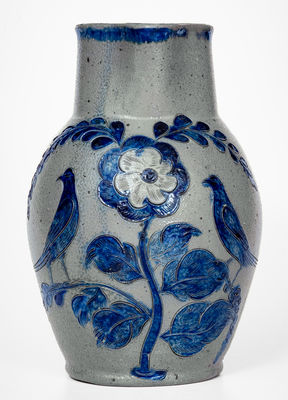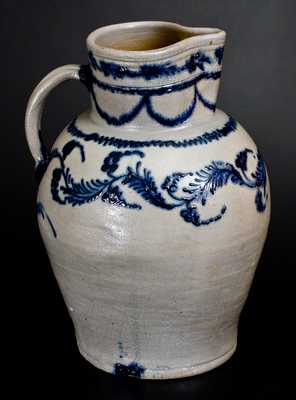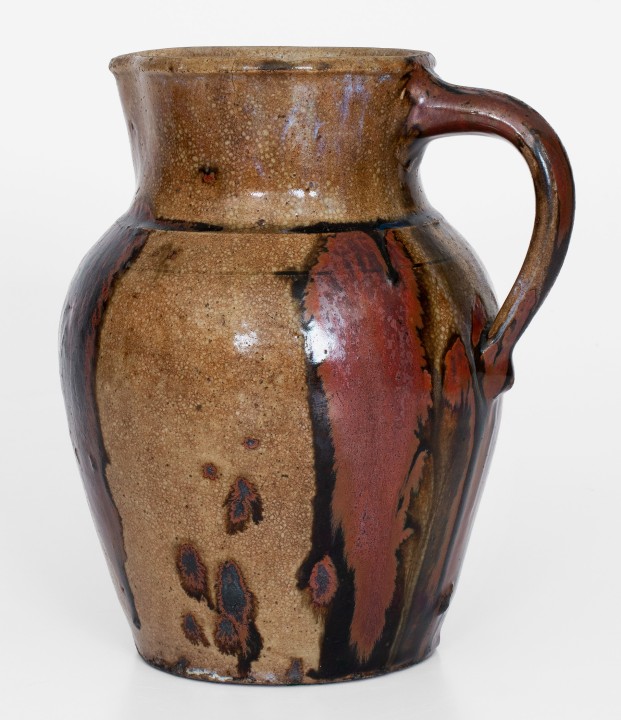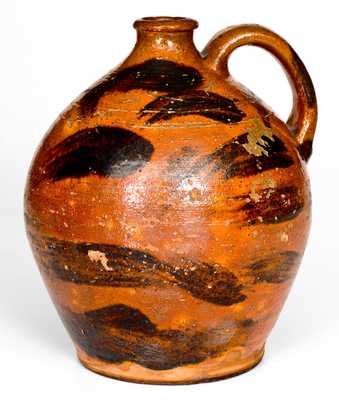Rare and Outstanding One-Gallon Alkaline-Glazed Stoneware Pitcher, Stamped "J.R," Joseph Clifford Demerval "Cliff" Rushton, Rusk County, TX, circa 1873-1900, semi-ovoid pitcher with tooled rim, the surface decorated with a wonderful, textured alkaline glaze, featuring streaks of celadon over a lighter ground with bold iron spotting throughout. Impressed "J.R," for potter, Joseph C.D. Rushton (1841-1909), on reverse. This pitcher displays one of the finest alkaline glazes that we have seen on an example of Southern stoneware, striking in its mottled coloration, with a tactile quality to the surface. Awareness of Texas's rich potting history has increased in recent years, in part due to the 2015 Museum of Fine Arts, Houston exhibit and corresponding publication, "Texas Clay: 19th-Century Pottery from the Bayou Bend Collection." When put into proper context, many of Texas's stoneware potteries can be viewed as an extension of the Edgefield, SC tradition as several of its major potting families began their careers in Edgefield, eventually traveling westward to Alabama and ultimately establishing shops in Texas. These included the Cogburns, the Prothros, the Duncans, the Leopards, and the Rushtons. This pitcher's sophisticated, gray-green glaze is revelatory of the family's Edgefield training. According to Southern ceramics scholar, Joey Brackner, Rushton's father, Joseph Clifford Rushton (1810-1868), learned the potter's trade in Edgefield, SC, before establishing a pottery circa 1834 in the community of Cedric, located on the border of Chambers and Randolph counties, Alabama. He potted there with his son, Clifford, the pitcher's maker, until his death in 1868. Clifford Rushton moved to Texas due to his father's death and the arrival of Reconstruction, potting in Rusk County until his death in 1909. For more information on the Rushton family of potters, see Brackner, "The Shaping of Texas Pottery. . ." in Texas Clay. Combining a beautiful glaze, desirable form, and rare maker's mark, this object is among the finest examples of Texas stoneware to come to auction in years. Provenance: A fresh-to-the-market example, which descended in a Texas family to the consignor. Very nice condition. A 2 3/4" hairline on underside, extending 4" up left side of pitcher. Minor wear to edges of handle. A minor in the-firing ping to body. No chips. H 10 5/8".
















